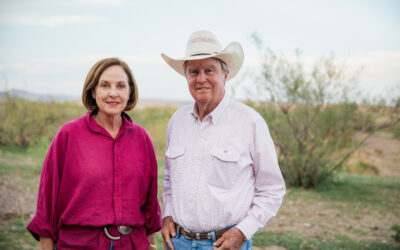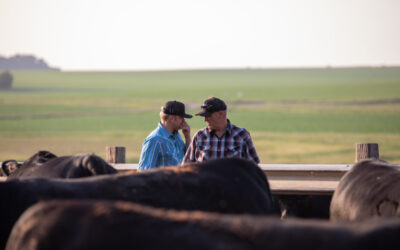
Quality pays, but what does it cost?
Research shows performance not sacrificed for premiums
By Katrina Huffstutler
There’s no doubt, cattle that earn the Certified Angus Beef ® (CAB®) brand or Prime grade also earn premiums. In 2017 alone, packers in a biannual survey reported paying cattle owners $75 million in grid premiums specifically for CAB.
But some producers worry that premium comes at a greater cost. At the recent Cattle Raisers Convention and Expo in Fort Worth, the vice president of production for CAB set their minds at ease.
Mark McCully cited an analysis of 136,000 steers fed at Five Rivers Cattle, comparing performance between high-grading (90% Choice and Prime with 45% CAB) and low-grading (60% Choice and Prime with 13% CAB) pens.
“These are yearling steers in their feedyard, analyzed to make sure we are comparing apples to apples,” he told producers at the Texas and Southwestern Cattle Raisers Association event. “They took all their pens of high-grading cattle and compared them to their pens of low-grading cattle.”
The highs were nearly 50 pounds heavier but had similar average daily gain, feed efficiency and cost of gain, debunking the idea that feedyard performance must be sacrificed to hit high quality levels.
McCully admitted sometimes efficiency can decline with higher grading pens, but it just doesn’t have to.
“I think we could do a better job at times, managing these cattle to the right end point,” he said, alluding to differing genetic abilities. “I think we overfeed some cattle. We probably give up some performance by not optimizing their grading potential.”
He said the industry’s next goal should be to get more of those cattle that can reach premium grades while simultaneously taking some of the waste fat off of them.
“We can do that,” McCully said. “We can select cattle to have more marbling and less back fat. We’ve got the genetic prediction tools to be able to help us bend that curve a little bit. I think that’s our challenge moving forward.”
Likewise, cow-calf producers don’t have to give up productivity for premiums.
“We’ve done a literature review of all of the data we could find that looks at the genetic correlation of marbling and any other traits significant to maternal function — scrotal circumference, age at puberty, age of first calving, etc.,” McCully said. “And what we found was there was not one paper or study out there that showed if you increased marbling you’d decrease these maternal traits.”
In fact the only correlation found was marbling to milk: as one increases, so does the other. That could be an issue in herds that already have over-producing cows, so milk level needs to match available nutrition.
Even so, McCully is encouraged.
“I think this paints a really positive outlook for our ability to maintain and improve maternal function of our cows,” he said, “and at the same time, improve the quality and eating satisfaction of our end product.”
you may also like
An Unforgiving Land
What makes a ranch sustainable? To Jon, it’s simple: the same family, ranching on the same land, for the last 140 years. The Means family never could have done that without sustainability. Responsible usage of water, caring for the land and its wildlife, and destocking their herd while the land recovers from drought.
System Over Scale
For Dallas Knobloch, it’s not about being the biggest feedyard—it’s about building a high-quality system that works. Today, with Tory’s wife Sadie and daughter Ivy, the Knobloch family owns and operates 4K Cattle. They feed 2,500 cattle at eight locations within 10 miles of home, manage 1,000 acres of crops and run a 125-head cow herd, all near Hills, Minn.
CAB Sets Sales Records, Sees Historically High Brand Acceptance Rates
In an otherwise tough time in the beef business, sales and supply records have been a bright spot. The positive numbers mean that quality beef production has not let up, and beef demand is holding. Consumers have proven the value proposition: the good stuff is worth a little more money, for a better eating experience.



